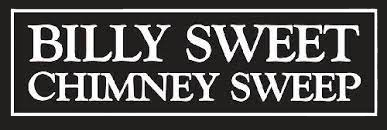
Creosote can’t be prevented, but there are ways to minimize its build up and the effects it may have on your chimney and home, in general.
If you could get on your roof and look down into your chimney (we don’t recommend this), you’d see a lot of black. Wondering what that black element is inside your chimney that totally covers the inside? That’s what we call creosote and it can cause tremendous damage if taken for granted. It has all these harmful chemicals that gradually become highly corrosive and could cause fires to happen inside the chimney. Although the formation of creosote cannot be prevented, it is still best to try and minimize it.
What is Creosote?
Creosote is a highly combustible chemical product obtained by the distillation of tar. It is heavier compared to other chemical products and is famous for its antiseptic and preservative properties. When wood is burned, there is production of creosote. It sticks onto the walls of the chimney after combustion takes place in the fireplace. It is a result of incomplete combustion.
Creosote has two main types:
- Wood-tar
- Coal-tar
Generally, wood tar is known for its meat preservation purposes and is known to be nontoxic. It is also used to treat hardwood and softwood to keep them dry until such time. It has been used in the medical field as a laxative or for other purposes like as an antiseptic. Coal tar, on the other hand, contains highly toxic properties. That’s why it is exclusively used for preserving wood only.
Those are the intentional and industrial uses of creosote. It can also be found in blast furnaces, but in a chimney it is found in the flue because wood was not properly burned.
The Three Levels of Creosote Build up
When you have your chimney inspected and cleaned, sometimes our experts will need to do a more thorough cleaning and literal scraping. This happens when there is too much creosote in the chimney walls and, if left there to thicken, might cause bigger problems that will soon become a homeowner’s worst nightmare. This is why creosote build up is described in levels based on the texture, thickness and color.
The first level is still called soot because it has not yet fully developed into creosote. It’s described to be flaky and can be removed easily with a chimney sweeps’ brush. It is still reachable and does not need any special technical equipment.
The second level is already known to be creosote. It’s hard and is already the color brown or black. In this stage, our licensed sweep will have to use specially designed video cameras to check and see the extent of damage done by the creosote. There is now a need for a more durable brush to use in removing the creosote.
For the third and final level, the creosote is already very thick and is now known as glaze. There is no chance for it to completely be removed unless you destroy the entire structure of your chimney – something we all wouldn’t want to do. In this stage, the creosote is highly flammable and has a shiny black texture and with just one false move, you can say bye-bye to your hard-earned home. In this level, constant scraping is done to minimize the thickness. There is a need for bigger equipment and a specially-designed brush to use for scraping off the creosote.
The Risks
Some think that by having a broomstick, you can already remove the creosote. What we have to realize is that there are risks in trying to take matters into our own hands. The biggest risk is fire. It can spark up anytime and only trained professionals know what to do in case this happens and how to put it out before anyone gets hurt. So it’s always best to leave the dirty work to us.
With annual inspections and sweeping, your chimney will not have to endure the aftereffects of what creosote can do. Taking this important step will definitely add more years to its lifespan and the guarantee of a fully-functional, well-maintained chimney. You can contact our company, Billy Sweet Chimney Sweep, because we have the best trained professionals with the right amount of experience to show and prove to you that indeed, we can get the job done right.
